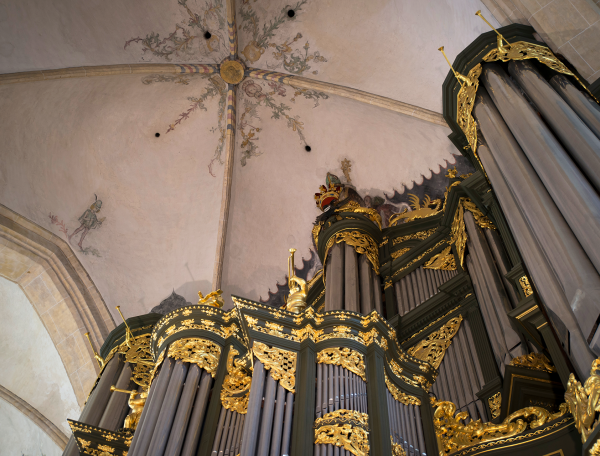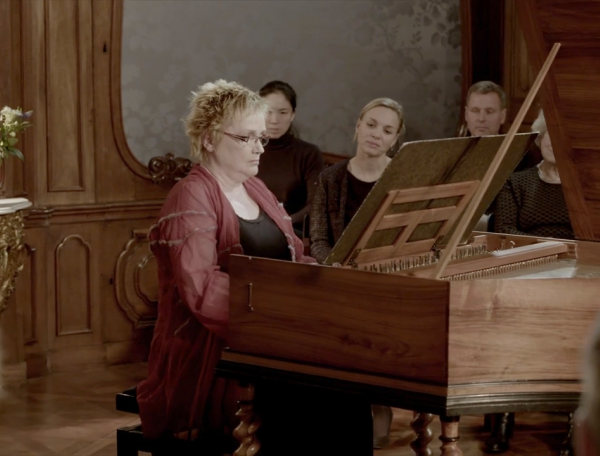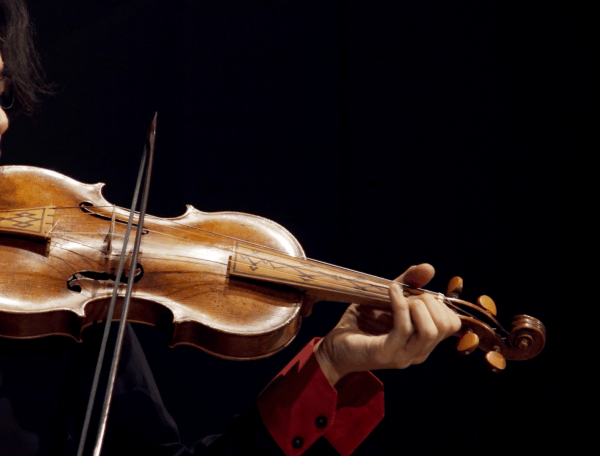

Toccata and fugue in D minor 'Dorian'
BWV 538 performed by Leo van Doeselaar
Walloon Church, Amsterdam
Behind the music
Gymnastics for the ears
Music like three-dimensional chess
Don’t be ashamed to listen to this toccata and fugue a second time, as it is extremely complex music that is difficult to take in all at once. Yet the key here is frugality, as Bach manages to spin out a few simple motifs over two breathtaking constructions. And although the movements of this ‘power couple’ were probably not written at the same time, they fit together perfectly.
The toccata is a model of rhetoric, wrapped up in a perpetuum mobile of semiquavers. The opening motif, which is almost a theme, is presented, commented on, confirmed, rearranged and reconfirmed, etc. Each musical gesture is derived from that single motif, which in itself is a wonderful achievement. Bach adds extra contrast through a lively dialogue between the great organ and the chair organ. And finally, to optimise the balance, short passages with ‘tense’ chords are consistently followed by stretches of brighter music.
The fugue, too, puts layer upon layer. The theme begins simply, although the second bar already sees a shift in rhythm and the start of the upward leaps, which lead later on to some very exciting combinations. There are two counter-themes (one of which resembles the toccata motif briefly), both of which are unbroken and overlap the theme perfectly, so that the piece never unwinds. After the first use of the pedal, the fugue feels its way forwards as Bach introduces his melodies in canon, first between the bass and the soprano, and then in three middle voices, until the threads can barely be disentangled. The end of the fugue breaks through the intoxicating interplay of lines and refers back pointedly to the toccata with sharp question-and-answer chords.
- BWV
- 538
- Title
- Toccata and fugue in D minor
- Epithet
- Dorian
- Instrument
- organ
- Genre
- organ works
- Year
- 1712-1717?
- City
- Weimar?
- Special notes
- The epithet 'Dorian' appears for the first time in a Peters publication from 1845, probably because the work is notated in D minor (with one flat) with no key signature, like the Dorian mode.
Extra videos
Vocal texts
Original
Translation
Credits
-
- Release date
- 12 December 2014
-
- Recording date
- 24 June 2014
-
- Location
- Walloon Church, Amsterdam
-
- Organist
- Leo van Doeselaar
-
- Organ
- Christian Müller, 1734
-
- Producer
- Frank van der Weij
-
- Film director
- Jan Van den Bossche
-
- Directors of photography
- Sal Kroonenberg, Ruben van den Broeke
-
- Grip
- Antoine Petiet
-
- Music production, editing and mix
- Holger Schlegel
-
- Film editor
- Dylan Glyn Jones
-
- Colorist
- Jef Grosfeld
-
- Production assistants
- Marco Meijdam, Zoë de Wilde
Discover
Help us to complete All of Bach
There are still many recordings to be made before the whole of Bach’s oeuvre is online. And we can’t complete the task without the financial support of our patrons. Please help us to complete the musical heritage of Bach, by supporting us with a donation!

